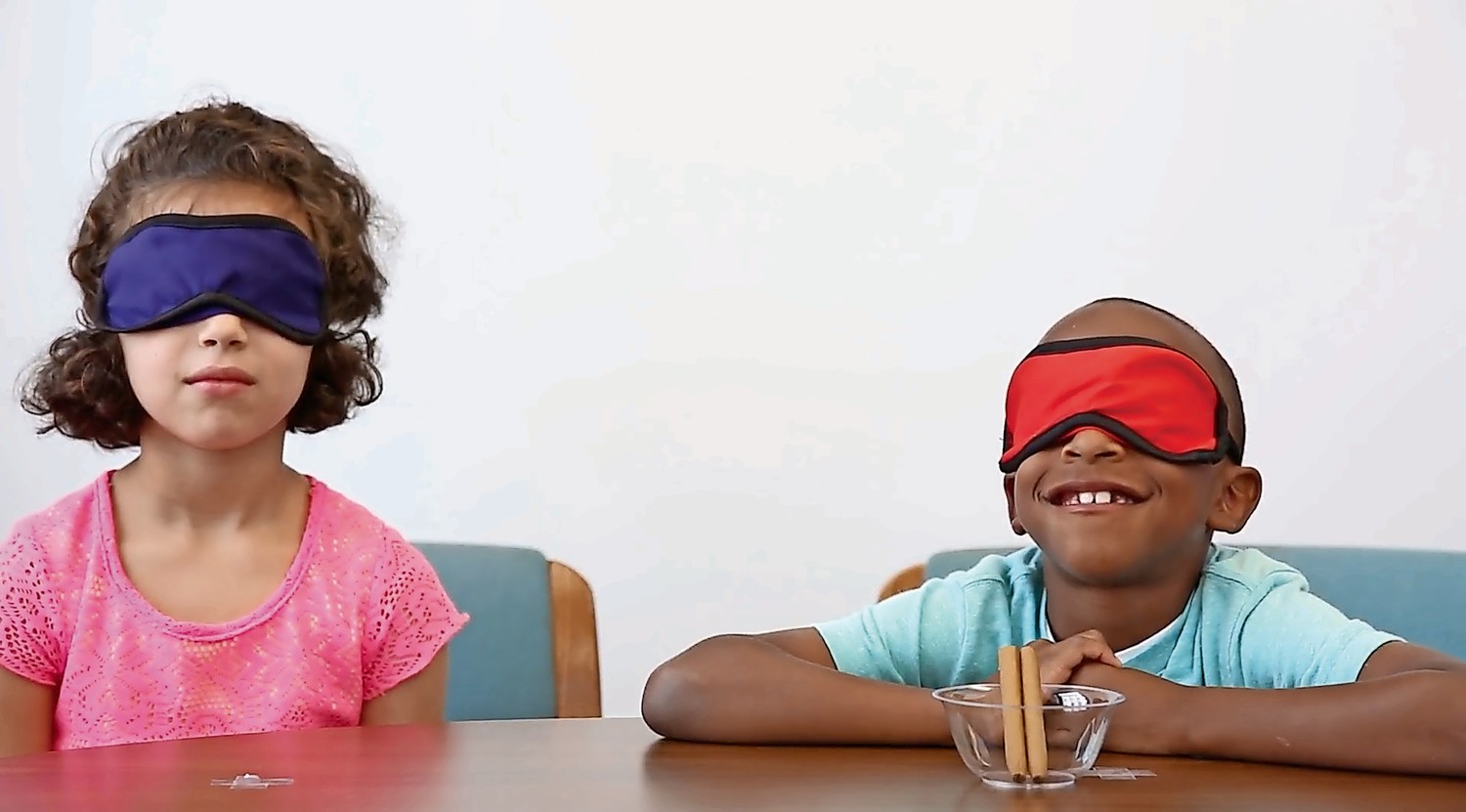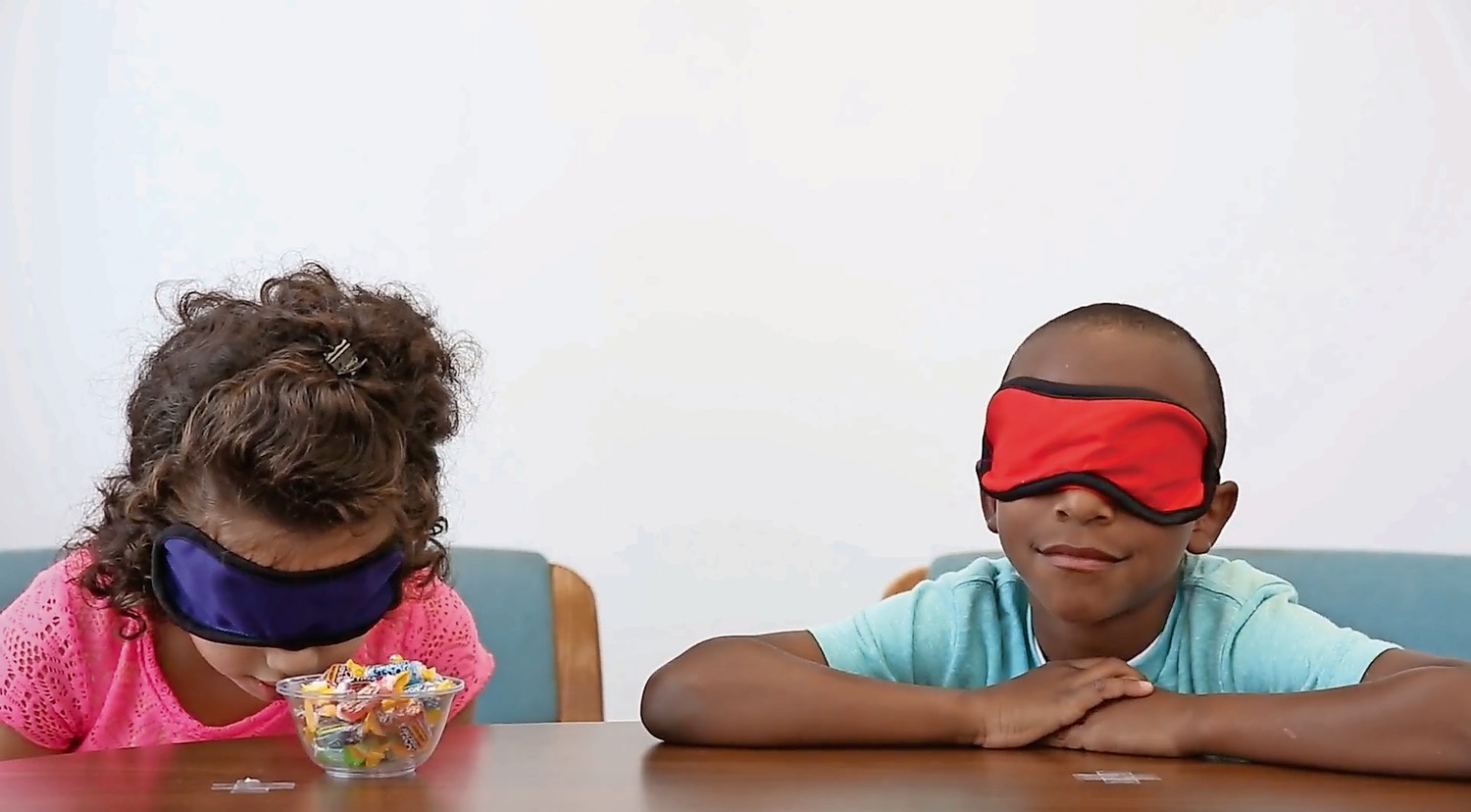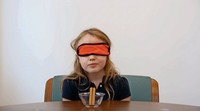PS 24 second-graders say no to candy-flavored tobacco
They wore blindfolds, with no idea what was inside bowls being placed under their nose.
The first smelled like pieces of candy, with scents like cherry and blueberry fighting through to the top. The next bowl had a similar sweet smell.
“Like bubblegum,” said Kutemba Chilufya, 7.
“It smells like chocolate,” said Yoan Morris-Slavov, 7.
But it wasn’t any of those things. Instead, the students at P.S. 24 smelled something many people may not even know exists — candy-flavored cigarettes.
Chilufya and Morris-Slavov were some of the children taking part in the video “Smell and Tell! Kids Respond to Candy-Flavored Tobacco,” sponsored by the American Thoracic Society. The goal of the smell test — and the video — is to demonstrate how young people could become easily confused by the two odors.
“I wanted to be a part of this video because I wanted to tell people that you really need to stop smoking,” Chilufya said. “If you keep up smoking, you’ll keep on coughing, and you’ll get sick and you’ll go the hospital. And that’s not great.”
The experience also served as an eye-opener for parents.
“It’s very scary,” said Fota Samakai, whose daughter Kutemba, was in the video. “Knowing that could actually happen, whereby she could be thinking she was eating candy, or it is wrapped in candy and none of you know. You wonder how many other people know about that.”
Vahan Nahabedian, the father of another P.S. 24 student Mairenie Nahabedian, said her participation in the video made her aware about the health risks of tobacco, and has now become the focus of her anti-smoking efforts. Mairenie’s father smoked cigarettes for more than 30 years before switching to e-cigarettes five years ago.
“She has repeatedly urged me to quit e-cigs,” Nahabedian said.
One of the goals of the video, which has since been posted to YouTube, is prevention, said Dacia Morris, who not only is the mother to Morris-Slavov, but also is the communications and marketing director for the thoracic group. It’s all “so that kids know the dangers and know how to respond to their peers if they try to pressure them, and they just won’t start to begin with.”
Morris wants to go a big step further — she wants legislation banning the sale of flavored tobacco products.
While candy-flavored tobacco might be harder to purchase in the city, outside the metro area it’s far easier, Morris said. By packaging the product using bright colors and promoting it’s flavored, “kids see it and they want to try it.”
“It’s not rocket science,” she said. “Once you smell the stuff, the next step is you light it up. It tastes good, so you keep trying it.”
Nearly 90 percent of cigarette smokers began by age 18, according to the Centers for Disease Control and Prevention.
Morris found a few surprises along the way during the project. When each of the children was interviewed individually, they thought the flavored tobacco might be “healthier” than the unflavored one.
Seven out of 10 middle and high school students who currently use tobacco have used a flavored product, according to a 2015 CDC report. Additionally, 63 percent of children who currently use e-cigarettes use flavored ones.
Founded in 1905 and with more than 15,000 members, the thoracic society works to improve worldwide health by advancing research and clinical care of respiratory diseases.
Mairenie Nahabedian had some advice for her peers who might want to smoke flavored tobacco.
“Don’t try it,” she said. “It’s a cigarette.”













